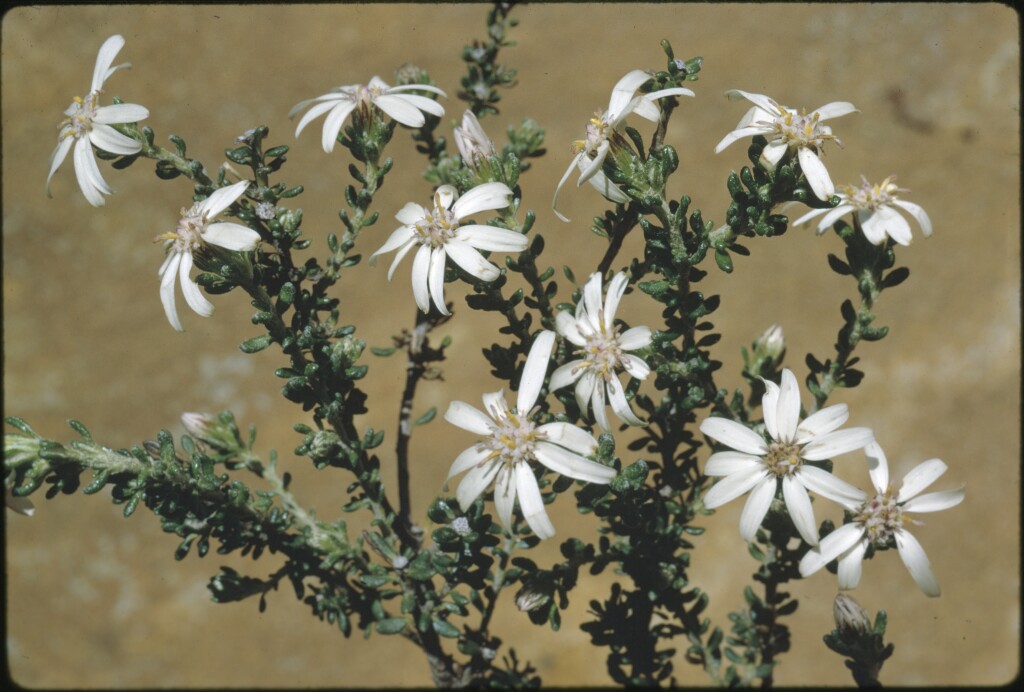Olearia minor
(Benth.) LanderSpreading shrub to c. 1 m high; branchlets and leaf undersurfaces densely pubescent with whitish cottony hairs. Leaves alternate, sessile or subsessile, elliptic or obovate, 1.5–8 mm long, 1–2.5 mm wide, obtuse or broadly acute, upper surface green, glabrous, or sparsely cobwebby when young, smooth or scabrous. Capitula 12–22 mm diam., solitary and terminal, sessile or subsessile; involucre conical, 4–6 mm long; bracts 4–5-seriate, graduating, glabrous near base, sparsely to densely pubescent toward the acute to obtuse apex. Ray florets 7–12, white to pale mauve, ligules 5.5–11 mm long; disc florets 6–13, yellow or mauve. Cypsela narrow-obovoid, c. 1–2 mm long, indistinctly ribbed, sparsely to densely sericeous, or glabrous; pappus bristles white or straw-coloured, 4–6 mm long. Flowers Aug.–Dec.
LoM, MuM, Wim, GleP, VVP, CVU, VAlp. Also WA, SA, NSW. Scattered on loamy soils with mallee in the north-west (Bambill, Murrayville, Beulah, fringes of the Little Desert), localized, but locally common in dry forest in the northern Brisbane Ranges and Werribee Gorge.
Walsh, N.G.; Lander, N.S. (1999). Olearia. In: Walsh, N.G.; Entwisle, T.J., Flora of Victoria Vol. 4, Cornaceae to Asteraceae, pp. 886–912. Inkata Press, Melbourne.
 Spinning
Spinning


